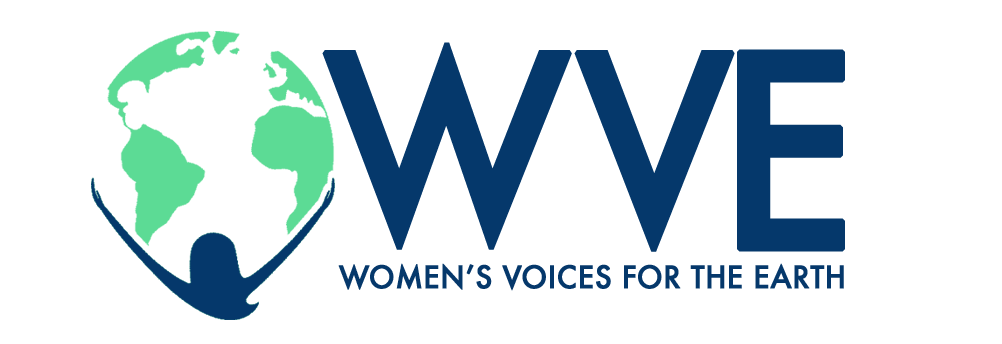Report Exposes Failures of Fragrance Industry’s Self-Regulated Safety Policies
FOR IMMEDIATE RELEASE 11.5.2015 – An exclusive report by national women’s health non-profit, Women’s Voices for the Earth (WVE), is a first of its kind expose’ on the failings of the fragrance industry’s self-regulated safety program.
The term “fragrance” actually represents a chemical cocktail that can be made up of hundreds of ingredients. Fragrances are found in thousands of consumer products, yet there is little regulatory oversight of the safety of those ingredients. The current system for fragrance safety is run entirely by the industry’s own International Fragrance Association (IFRA) and their research arm, the Research Institute for Fragrance Materials (RIFM).
“The safety of fragrance chemicals is not determined, monitored or safe-guarded by any governmental agency globally in any comprehensive fashion,” said Alexandra Scranton, Director of Science and Research at WVE and author of the report. “Allowing the fragrance industry to self-regulate, and establish itself as the sole authority on fragrance safety, simply does not serve the public health interest.”
Titled, Unpacking the Fragrance Industry: Policy Failures, the Trade Secret Myth and Public Health, the report calls attention to the fact that the majority of the scientific studies on fragrance materials are generated by fragrance manufacturers or the fragrance trade association’s own laboratories. Largely, these studies have never been published or peer-reviewed, and are not publicly available.
“There is no independent review of laboratory practices, appropriate controls, levels of significance or any of the hallmarks of authoritative science, to ensure that the results of these studies have not been manipulated to serve the interests of the manufacturer conducting the testing,” said Scranton.
RIFM utilizes an “Expert Panel” to guide the safety determinations. While it is intended to be a wholly independent panel of experts who review the safety of fragrance ingredients, the RIFM Expert Panel operates in secret, without the benefit of public oversight.
“In addition, there are significant sins of omission,” said Scranton. “There is no evidence that the RIFM panel has reviewed the safety of several of the most controversial fragrance ingredients, such as hormone-disrupting phthalates and musks or carcinogens, including styrene and pyridine in the last 30-40 years. What’s more, there are no established safety standards in place for these noted chemicals of concern.”
Fragrance safety standards are created by the industry’s International Fragrance Association (IFRA) – there are currently 186 banned or restricted substances on the IFRA safety standards list. However, as the report discloses, in addition to failing to set safety criteria for such chemicals as phthalates, musks and various carcinogens, these safety standards are voluntary. Little to no compliance verification is required from fragrance manufacturers to follow IFRA Standards.
“The strength of the industry’s safety program is also called into question when you consider that over 100 of the chemicals for which there are no IFRA Standards can be found on authoritative lists of toxic chemicals, including California Prop 65, International Agency for Research on Cancer and the EU Substances of Very High Concern, ” said Scranton. “These chemicals have been prioritized by numerous governmental bodies worldwide, yet these same chemicals, which are used in fragrances and are listed on IFRA’s Transparency List, do not appear to be prioritized by the IFRA/RIFM safety program.”
“What we have here is an inherent conflict of interest,” said Erin Switalski, Executive Director of Women’s Voices for the Earth. “RIFM, the body responsible for determining the safety of fragrances, is governed by a Board of Directors made up of the world’s largest fragrance sellers. They have a vested financial interest in making sure that fragrances are deemed safe.”
The report also debunks the industry myth that fragrance ingredients should enjoy trade secret protections. It spotlights how labeling products with fragrance components with the blanket-term ‘fragrance’ is a holdover from the industry’s long held tradition of keeping trade secrets for fragrance formulas. This has resulted in policy-makers exempting fragrance from ingredient listing requirements in existing or proposed regulations.
In recent decades, the innovations in reverse engineering technology now make it possible to replicate a list of ingredients found in a fragrance with incredible precision. Many manufacturers have the technology in-house to analyze their competitor’s products in order to better understand, imitate or improve upon their scents. Since the fragrance ingredient information can be readily obtained by independent means, the information simply no longer meets the definition of “trade secret.”
“But this goes well beyond simply keeping formula secrets out of hands of competitors – this is a major health issue,” said Scranton.
By keeping this information from the public, consumers and their doctors are unable to decipher which fragrance ingredients are actually leading to adverse reactions. Regulators are unable to access the necessary science to even determine the fragrance ingredients of greatest concern.
“The bottom line is that the industry’s trade secret protection of fragrance ingredients is an outdated policy, its self-regulation of ingredient safety, inadequate. These are forcing unnecessary and harmful barriers to the public’s right to know and overall safety,” said Scranton “and underscores the need to more strictly regulate the industry.”
—————————————-
About Women’s Voices for the Earth
Women’s Voices for the Earth has been a leader in fragrance ingredient research and safety since 2007. Their fragrance campaign work includes reports Secret Scents and What’s That Smell? This new investigative report is a continuation of WVE’s work towards complete ingredient transparency and chemical safety.
Founded in 1995, Women’s Voices for the Earth amplifies women’s voices to eliminate the toxic chemicals that harm our health and communities. With thousands of members across the United States, WVE changes corporate practices, holds government accountable, and works to ensure a toxic-free future for all. www.womensvoices.org.
Media Contact:
Alexandra Scranton, Director of Science and Research at Women’s Voices for the Earth
alexs@womensvoices.org; 406-543-3747
Beth Conway, Communications Manager at Women’s Voices for the Earth
bethc@womensvoices.org;


